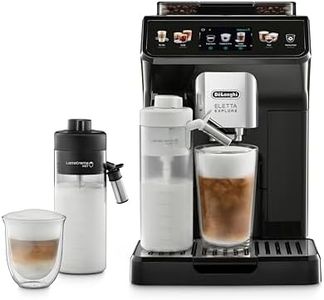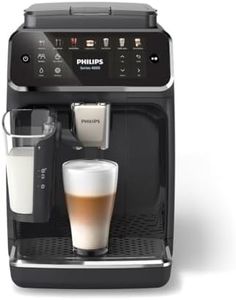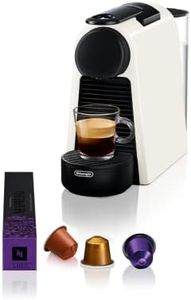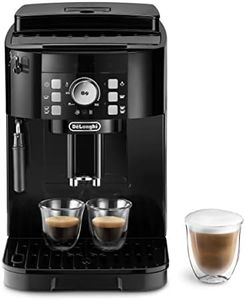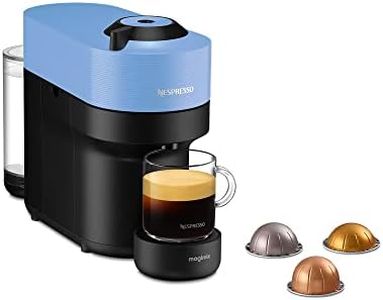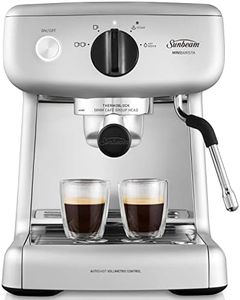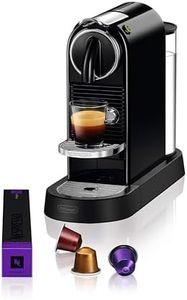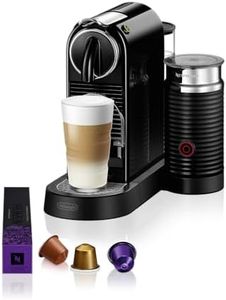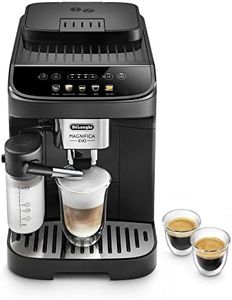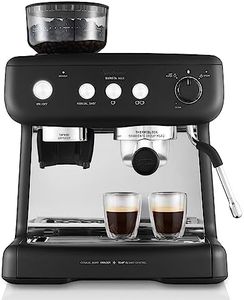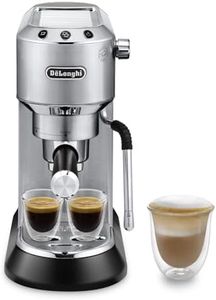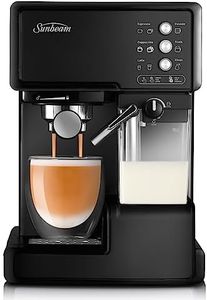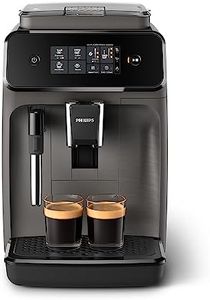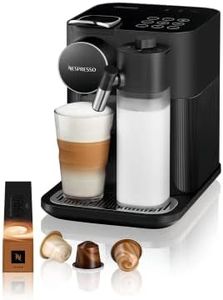We Use CookiesWe use cookies to enhance the security, performance,
functionality and for analytical and promotional activities. By continuing to browse this site you
are agreeing to our privacy policy
10 Best Espresso Machines
From leading brands and best sellers available on the web.Buying Guide for the Best Espresso Machines
Choosing an espresso machine can seem complex, but it's all about matching the machine to your coffee habits and lifestyle. Think about how often you'll use it, how much control you want over the brewing process, and how much effort you're willing to spend on making your coffee. Some espresso machines are great for beginners, while others appeal to those who want to master every detail. Decide whether you want a quick, easy cup or the full coffeehouse experience—this will help guide your choice.Machine Type (Manual, Semi-Automatic, Automatic, Super-Automatic, Capsule)This refers to how involved you want to be in making your espresso. Manual machines give you full control but require skill and practice. Semi-automatic machines handle the water flow but need you to grind, dose, and tamp the coffee. Automatic machines control water delivery for you, making things easier, while super-automatic machines handle grinding, dosing, and even milk frothing with just the push of a button. Capsule machines use pre-packed pods for ultimate convenience but less customization. To choose, think about how much time, effort, and control you want during espresso preparation; beginners often prefer automatic or capsule types, whereas enthusiasts may opt for manual or semi-automatic machines.
Boiler Type (Single, Dual, Heat Exchange)The boiler heats the water for brewing and steaming milk. Single boiler machines can only brew espresso or steam milk at one time, so you’ll need to wait between steps. Heat exchange machines allow you to steam and brew simultaneously via a special design, while dual boilers have separate boilers for each function, offering the best performance for making multiple drinks in a row. If you mostly drink straight espresso, a single boiler is usually fine; if you prepare a lot of milk drinks (like lattes or cappuccinos), simultaneous steam and brew ability in a heat exchange or dual boiler model may be more convenient.
PressureEspresso is created through high pressure, usually measured in bars. The standard for making authentic espresso is around 9 bars, though machines may be advertised with higher numbers. Consistent, stable pressure is more important than very high pressure, ensuring good extraction and taste. Most home users should look for machines capable of around 9 bars; pressure much higher than that isn't needed for better espresso and isn’t a sign of a better machine.
Steam WandThe steam wand froths and heats milk for drinks like cappuccinos and lattes. Some basic machines may not have one, while others offer simple or more sophisticated wands with better control over milk texture. If making milk-based drinks is important to you, look for a machine with a steam wand that allows for adjustable steam and easy cleaning. If you rarely make milk drinks, this feature may not matter as much.
Grinder IntegrationSome machines come with built-in grinders (commonly super-automatic models), while others require a separate grinder. Freshly ground coffee is essential for great espresso; a built-in grinder adds convenience, while a separate grinder usually gives you more control over the grind size. If you want simplicity, an integrated grinder is handy. If you want to experiment and fine-tune your espresso, consider machines that allow you to use your own grinder.
Size and FootprintEspresso machines come in various sizes, from compact models for small kitchens to large, café-style machines. Consider where the machine will live and how much countertop space you can dedicate. A larger machine often has more features but may not fit in every kitchen, while a compact model is easier to accommodate but may offer fewer options. Measure your space before deciding.
Ease of CleaningRegular cleaning is crucial for espresso quality and machine longevity. Machines with removable parts or automated cleaning cycles are easier to maintain. Complex machines may need more effort to keep clean. If you prefer low-maintenance appliances, look for those with automatic rinsing and accessible removable parts.
Water Tank CapacityThe water tank size determines how many cups you can brew before refilling. Smaller tanks are fine for occasional use or single users, while larger tanks are better for households or frequent entertainers. Choose a tank size that matches how many espressos or milk drinks you typically make in a session.
Temperature ControlConsistent water temperature makes better espresso. Some machines allow precise temperature adjustments, while others use fixed settings. Machines with better temperature control enable more consistent and customizable results. If you’re particular about espresso taste or want to experiment, look for machines offering temperature control.
